Loliolus
Michael Vecchione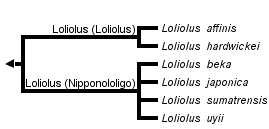


This tree diagram shows the relationships between several groups of organisms.
The root of the current tree connects the organisms featured in this tree to their containing group and the rest of the Tree of Life. The basal branching point in the tree represents the ancestor of the other groups in the tree. This ancestor diversified over time into several descendent subgroups, which are represented as internal nodes and terminal taxa to the right.

You can click on the root to travel down the Tree of Life all the way to the root of all Life, and you can click on the names of descendent subgroups to travel up the Tree of Life all the way to individual species.
For more information on ToL tree formatting, please see Interpreting the Tree or Classification. To learn more about phylogenetic trees, please visit our Phylogenetic Biology pages.
close boxIntroduction
These are generally small squids with heart-shaped fins.
Brief diagnosis:
A loliginid ...
- with short mantle, rounded posteriorly; fins wider than long but without posterior lobes.
- with ventral crest on hectocotylus formed by fusion of the protective membrane with the ventral row of papillae.
- with an Indo-Pacific distribution.
Characteristics
- Arms
- Arm sucker rings with square plate-like teeth on margin.
- Hectocotylus:
- Ventral crest present, formed by fusion of protective membrane with ventral row of papillae such that original form of conical papillae completely obscured (see below).
 Click on an image to view larger version & data in a new window
Click on an image to view larger version & data in a new window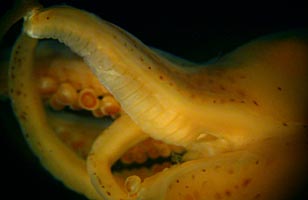
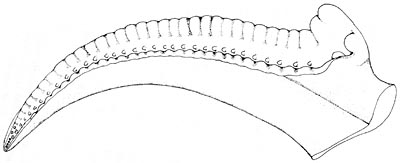
Figure. Top - Aboral-medial view of the hectocotylus of Loliolus (Loliolus) hardwickei showing the crest that reaches the full length of the arm, male, off Madras, India, preserved. Photograph by R. Young. Bottom - Oral-lateral view of the hectocotylus of L. (L.) hardwickei showing the crest, male, 33 mm ML, Indian Ocean south of Calcutta. Drawing from Lu et al. (1985).
- Tentacles
- Tentacular clubs expanded, suckers in four series.
- Tentacular clubs expanded, suckers in four series.
- Mantle
- Mantle rounded posteriorly; without tail-like elongation.
- Mantle rounded posteriorly; without tail-like elongation.
- Fins
- Fins extend to posterior tip of mantle.
- Photophores
- Photophores absent.
- Photophores absent.
- Viscera
- Eggs small.
- Spermatophore cement body short.
comments
Hectocotylization includes a crest along a portion of the ventral surface of the arm and a modification of part of the dorsal row of suckers into papillae. Modification of the proximal portion of the hectocotylus varies between subgenera. In Loliolus (Loliolus) the modified portion of the hectocotylus occupies the entire length of the arm whereas in Loliolus (Nipponololigo) some proximal suckers are unmodified.
Nomenclature
Steenstrup (1856) erected the genus Loliolus for his new species typus. Lu et al. (1985) showed that L. typus is a junior synonym for Loligo hardwickei Gray, 1849, making the latter species the type for the genus Loliolus.
Because the percentage of the arm hectocotylized is considered to be a cline within this group of species with otherwise similar hectocotyli and arm-sucker dentition, Loliolus and Nipponololigo were combined by Vecchione et al. (1998) into a single genus that, by priority, is named Loliolus.
Discussion of Phylogenetic Relationships
Loliolus was originally erected to include species of small loliginids with heart-shaped fins in which the entire left ventral arm of the males is modified. However, as discussed by Brakoniecki (1986), clines exist in the percentage of the arm hectocotylized within species groups with similar hectocotyli. Thus, this character state is not sufficient for generic status. The presence, though, of a distinctive character, a ventral crest on the hectocotylus formed by fusion of the protective membrane with the ventral row of papillae such that the original form of the conical papillae is completely obscured, indicates a close relationship among these species (Natsukari, 1983).
References
Brakoniecki, T.F. 1986. A Generic Revision of the Family Loliginidae (Cephalopoda; Myopsida) Based Primarily on the Comparative Morphology of the Hectocotylus. Ph.D. Dissertation, University of Miami, Miami, FL, USA. 163 pages.
Lu, C.C., C.F.E. Roper, and R.W. Tait. 1985. A Revision of Loliolus (Cephalopoda; Loliginidae), including L. noctiluca, a new species of squid from Australian waters. Proceedings of the Royal Society of Victoria, 97(2):59-85.
Natsukari, Y. 1983. Taxonomical and morphological studies on the loliginid squids--III. Nipponololigo, a new subgenus of the genus Loligo. Venus, The Japanese Journal of Malacology, 42(4):313-318.
Vecchione, M., T. F. Brakoniecki, Y. Natsukari and R. T. Hanlon. 1998. A provisional generic classification of the family Loliginidae. Smithson. Contr. Zool., 586.
Vecchione, M., E. Shea, S. Bussarawit, F. Anderson, D. Alexeyev, C.-C. Lu, T. Okutani, M. Roeleveld, C. Chotiyaputta, C. Roper, E. Jorgensen and N. Sukramongkol. 2005. Systematics of Indo-West Pacific loliginids. Phuket Mar. Biol. Cent. Res. Bull. 66: 23-26.
Title Illustrations

| Scientific Name | Loliolus hardwickei |
|---|---|
| Location | off Madras, India |
| Specimen Condition | Preserved |
| Sex | Male |
| View | Ventral |
| Image Use |
 This media file is licensed under the Creative Commons Attribution-NonCommercial License - Version 3.0. This media file is licensed under the Creative Commons Attribution-NonCommercial License - Version 3.0.
|
| Copyright |
©

|
About This Page

National Museum of Natural History, Washington, D. C. , USA
Page copyright © 2018
 Page: Tree of Life
Loliolus .
Authored by
Michael Vecchione.
The TEXT of this page is licensed under the
Creative Commons Attribution-NonCommercial License - Version 3.0. Note that images and other media
featured on this page are each governed by their own license, and they may or may not be available
for reuse. Click on an image or a media link to access the media data window, which provides the
relevant licensing information. For the general terms and conditions of ToL material reuse and
redistribution, please see the Tree of Life Copyright
Policies.
Page: Tree of Life
Loliolus .
Authored by
Michael Vecchione.
The TEXT of this page is licensed under the
Creative Commons Attribution-NonCommercial License - Version 3.0. Note that images and other media
featured on this page are each governed by their own license, and they may or may not be available
for reuse. Click on an image or a media link to access the media data window, which provides the
relevant licensing information. For the general terms and conditions of ToL material reuse and
redistribution, please see the Tree of Life Copyright
Policies.
- Content changed 04 March 2008
Citing this page:
Vecchione, Michael. 2008. Loliolus . Version 04 March 2008 (under construction). http://tolweb.org/Loliolus/19859/2008.03.04 in The Tree of Life Web Project, http://tolweb.org/






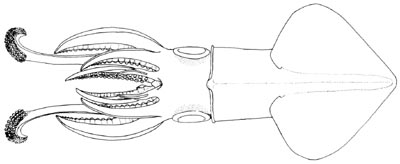

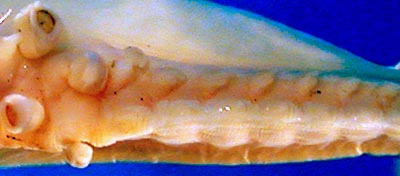
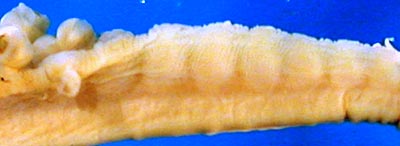


 Go to quick links
Go to quick search
Go to navigation for this section of the ToL site
Go to detailed links for the ToL site
Go to quick links
Go to quick search
Go to navigation for this section of the ToL site
Go to detailed links for the ToL site